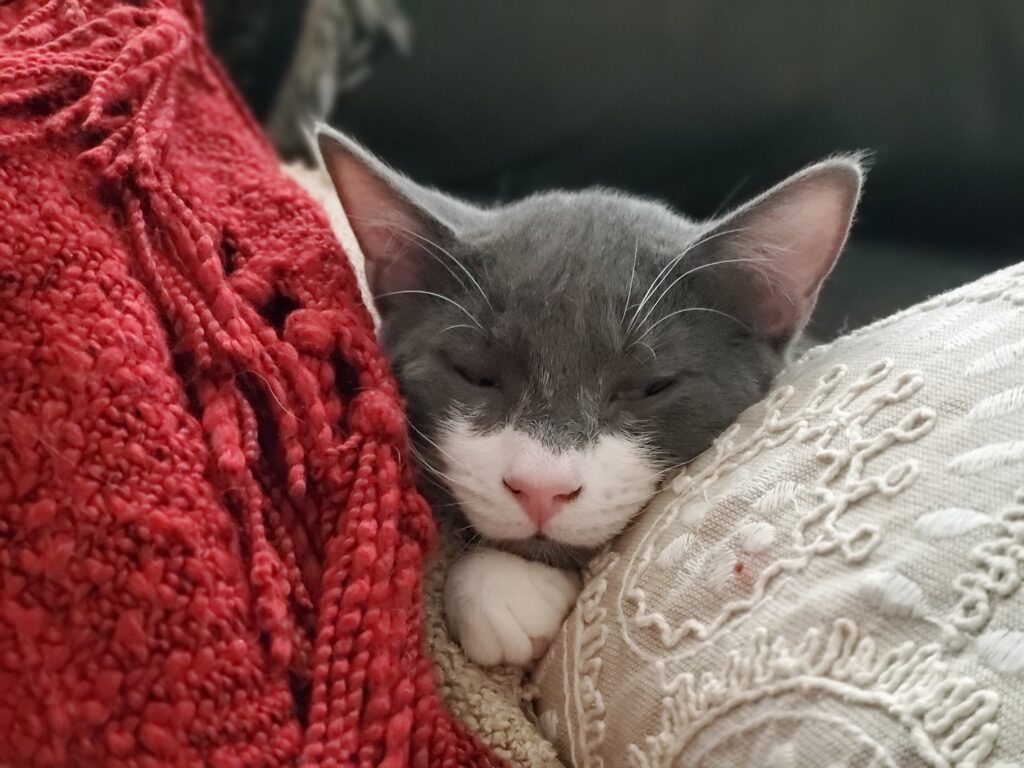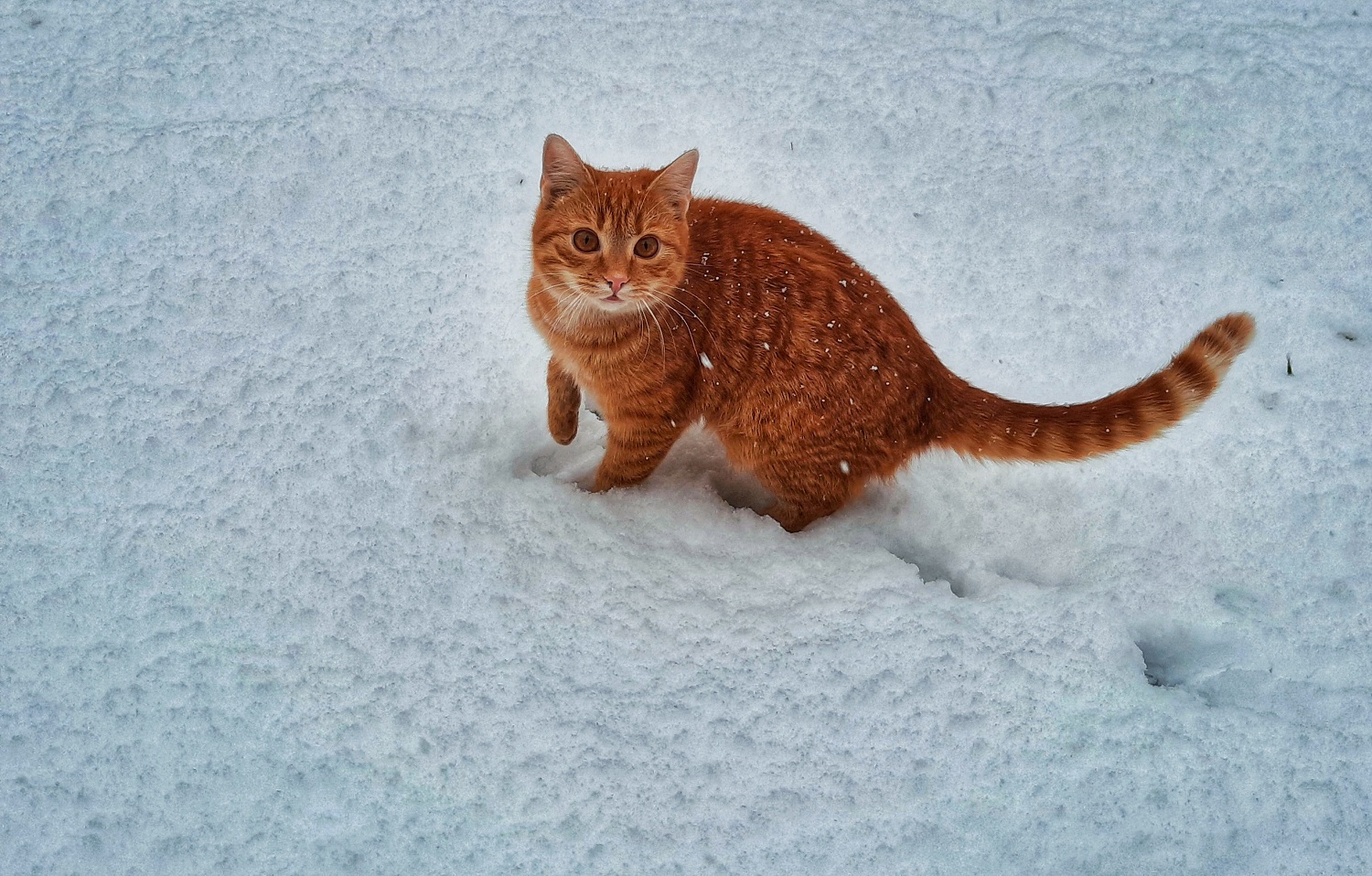A fluffy kitten in the snow might look cute enough for a holiday card, but cold weather comes with very real risks for tiny paws and sensitive ears. Kittens can get frostbite, and unlike those tough outdoor tomcats you might see strutting through the snow, young cats are especially vulnerable to extreme temperatures.
Frostbite in kittens is more than just a chill. It can lead to serious tissue damage and permanent injury if not treated quickly. Whether your kitten is an indoor dweller with access to chilly porches or a supervised explorer during winter, it is important to understand how frostbite happens and what you can do to prevent it.
What Frostbite Really Is
Frostbite happens when skin and underlying tissues freeze due to exposure to cold temperatures. The body naturally pulls blood toward core organs to stay warm, which leaves extremities like the ears, nose, tail, and toes with limited circulation. This drop in blood flow is what makes these areas freeze faster.
Kittens are more at risk because of their small size, thin skin, and often underdeveloped ability to regulate body temperature. They can become dangerously cold much faster than adult cats, and they are less likely to realize when they need to head back inside.
When and Where Frostbite Happens
Frostbite typically occurs in subfreezing temperatures, especially when wind, moisture, or prolonged exposure are involved. It does not take a blizzard or record-setting cold to cause damage. In fact, temperatures below 32°F (0°C) can start affecting a kitten within minutes if they are wet, exposed, or already cold.
Common frostbite-prone body parts include:
- Ear tips
- Paw pads and toes
- Nose and muzzle
- Tail tip
Kittens do not need to be fully outdoors to be at risk. Garages, porches, sheds, and even open windows can expose them to dangerously low temperatures. If it is too cold for you to be comfortable outside without gloves, it is probably too cold for your kitten too.
How to Recognize the Signs of Frostbite in Kittens
Frostbite can be tricky to identify at first. It does not always show immediate symptoms, and in the early stages, it may look like your kitten just has cold ears or dirty paws.
Watch for these signs:
- Pale, gray, or bluish skin on exposed areas
- Skin that feels cold or firm to the touch
- Swelling in the affected area
- Pain or sensitivity when touched
- Blisters, ulcers, or scabbing as the tissue starts to thaw
- Blackened or dead-looking skin in severe cases
Sometimes the worst damage does not show up right away. As the area warms, tissue can become red, swollen, or start to peel. In serious cases, dead tissue may fall off entirely. If you see anything concerning, a vet should be your next stop.
Related read: Why Your Kitten’s Breath Smells Like Fish And When to Worry.
What to Do If You Suspect Frostbite
If you think your kitten has frostbite, time is important. Get them out of the cold and into a warm, dry space immediately.
Here is what you should do right away:
- Gently wrap them in a warm towel or blanket
- Use warm (not hot) water to soak affected areas
- Pat dry carefully without rubbing or massaging
- Keep them calm and warm until you can get veterinary care
- Do not apply heat pads, hair dryers, or direct heat sources
It may be tempting to try home remedies, but frostbite can be deceptive. The tissue may look mild at first, only to worsen over the next day or two. Always have a vet examine your kitten, even if the damage seems minor.
How Vets Treat Frostbite
Your veterinarian will assess how deep the frostbite goes and may perform tests to check for tissue damage or underlying hypothermia. Treatment typically includes:
- Warming and rehydration
- Pain medication
- Antibiotics to prevent infection
- In severe cases, surgical removal of dead tissue
Recovery depends on how quickly treatment begins and how extensive the damage is. Some kittens make a full recovery, while others may need ongoing care or even partial amputation in the worst scenarios. This is why early action matters so much.

So, there I was, braving the mean streets of Riverside in the freezing cold. I mean, who doesn’t love being an icicle with paws, right? But then, that Mom character just had to come along and “rescue” me, bringing me to this warm, cozy new home. Now, I have to endure endless snuggles, naps on soft blankets, and an endless supply of food. #TheStruggleIsReal #KittyLifeUpgrade #CozyBlanketsAreTheSchnizzle
Joey
How to Prevent Frostbite in Kittens
The best way to protect your kitten is to plan ahead and avoid unnecessary cold exposure. Frostbite prevention is simple once you know what to watch out for.
Keep them indoors during cold weather
Even if your kitten is curious about snow or likes to watch the world from a patio, limit outdoor time to short, supervised visits when temperatures drop.
Block off cold zones in your home
Garages, drafty porches, and poorly insulated windows can get dangerously cold. Keep your kitten out of these areas, especially during the night.
Dress them in a sweater if needed
Some kittens benefit from a soft, snug sweater to help them retain body heat indoors. Make sure it fits properly and never restricts movement.
Wipe off wet fur and paws
If your kitten steps in snow or slush, dry them off right away. Moisture speeds up heat loss and increases the risk of skin damage.
Provide warm bedding
Place cozy beds, fleece blankets, or heated cat pads in safe areas. If your home tends to be chilly, create warm napping spots away from drafts.
Final Thoughts: Cold Weather Is No Match for a Prepared Cat Parent
Kittens may be adventurous and fearless, but they are also delicate when it comes to the cold. Understanding the risks of frostbite in kittens helps you take simple, effective steps to protect them all winter long.
Let them enjoy watching snowflakes from the window, chase toys across cozy rugs, and nap in warm piles of blankets. Just keep the icy adventures to a minimum, and your kitten will stay safe, happy, and frostbite-free.
Even snow lovers need a warm place to curl up. Make sure your kitten has one.
Sources:
Frostbite in Cats https://www.petmd.com/cat/emergency/common-cat-emergencies/frostbite-cats
Cold Weather Dangers for Cats https://vcahospitals.com/know-your-pet/cold-weather-pet-safety
Cat Frostbite Prevention Tips https://www.humanesociety.org/resources/protect-your-pet-during-cold-weather
Kitten Care in Winter https://www.icatcare.org/advice/winter-safety-for-cats
Recent Posts
Explore why cats sleep so much, including the evolutionary reasons and the health benefits they derive from their extensive sleep patterns.
Explore the causes of cat dandruff, its implications, and effective ways to deal with it so your feline friend remains happy and healthy.


